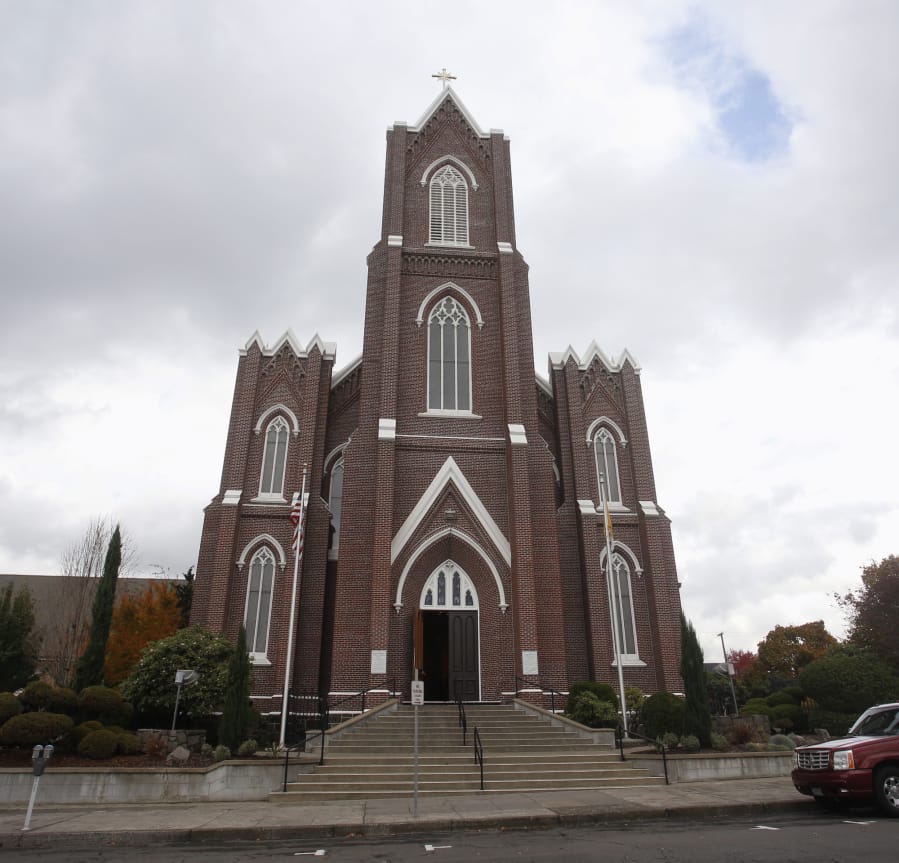The bell ringer at St. James won’t have to get up an hour early to call the faithful to Sunday’s 7:30 a.m. Mass.
There is no bell ringer.
There are no bells.
The chimes are computerized, and that includes programmed schedules that account for daylight-saving time transitions in spring and fall.
“It’s all run by a digital system,” said Scott Powell, pastoral assistant of music and liturgy at the Proto-Cathedral of St. James the Greater.
The peal of bells from the landmark at 218 W. 12th St. is a familiar element of downtown Vancouver’s soundscape. The chimes ring at 9 a.m., noon and 6 p.m.
They also ring just before Mass; since there are 12:10 p.m. services Tuesday through Friday, there’s a lot of chiming in the first 10 minutes of the afternoon.
“That is a popular question,” Powell said. “Why does it ring at noon, and then again 10 minutes later?”
The carillon is so computerized that it is programmed for Easter in 2100, but there is a traditional, Old World touch to the most important part of the process: the sound of bells. Each chime was produced by a cathedral bell and digitally recorded.
What people hear are “from cathedrals in England and Germany and the Netherlands,” Powell said.
The system was made by Verdin, a sixth-generation company in Cincinnati. Founded in 1842, it bills itself as Ohio’s oldest family-owned business.
“We have had this system since 2013,” Powell said. “It is much more realistic.”
The previous system from the 1950s was a tubular bell sound that was pushed out through a speaker, Powell said. When it hit the end of its scheduled time slot, it just quit. A real bell will slowly fade away.
Keeping track of seasonal time changes isn’t the only computerized scheduling function.
“There is a different bell for different things and for different seasons.
They include Lent, Advent, Christmas and Easter, which is more complicated because it is determined by the lunar calendar.
No problem.
“The computer is programmed out about 100 years,” Powell said.
That doesn’t solve all spring-forward issues for Sunday’s churchgoers.
“Every year, at least one or two people show up an hour early or an hour late for Mass. It’s less of a problem now because of so much digital technology,” he said.
But if someone shows up an hour late for Sunday’s 7:30 a.m. Mass, there is an easy solution.
“They can wait 30 minutes for the 9 a.m. Mass.”




